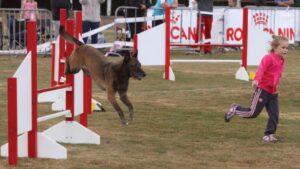
Living with the Belgian Malinois
Discover life with the Belgian Malinois, a highly intelligent and energetic breed ideal for sports and companionship.
Home » Dog Breeds » Belgian Malinois Dog Breed
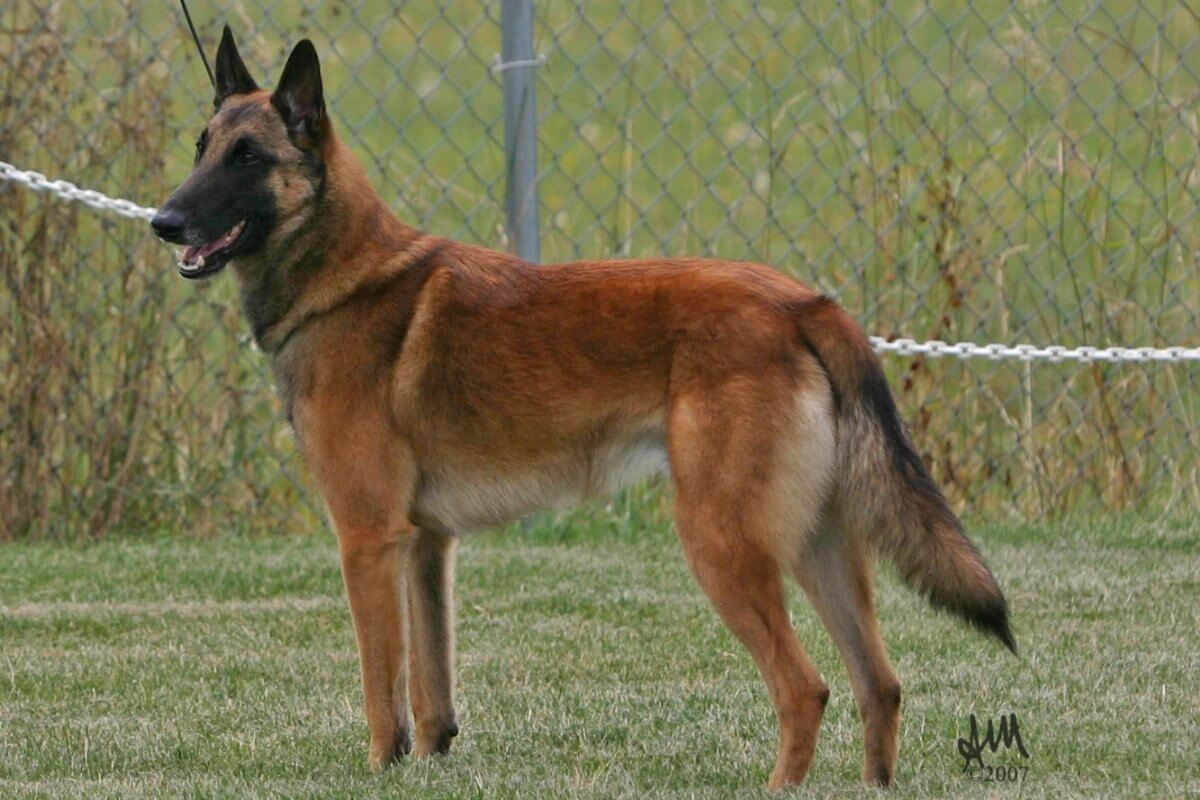
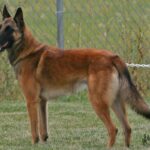
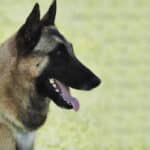
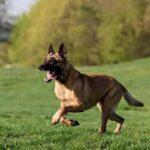
The Belgian Malinois is one of four varieties of Belgian Sheepdogs, known for its intelligence, high energy, and ability to work. Though often mistaken for the German Shepherd Dog due to the physical similarities shared by both breeds, the Malinois is distinguished by its more elegant build and intense nature. A loyal protector, the Malinois frequently serves in police and military roles worldwide.
Herding
22 – 26 Inches
40 – 80 Pounds
14 – 16 Years
| Country of Origin | Belgium |
|---|---|
| Bred For | Herding, Guarding, Companionship |
| Known For | Loyalty, Strong Work Ethic, Intelligence, Proud Carriage |
| Popularity | High |
| Temperament | Alert, Intelligent, Inquisitive, Confident, Energetic |
| Activities | Herding, Running, Hiking, Conformation Shows, Dog Sports, Police Dog, Search and Rescue |
The story of the Belgian Malinois is intertwined with the pastoral landscapes of Belgium, from which it takes its name. Born out of necessity and utility, this dog’s history reflects a legacy of loyal workmanship and dedicated service.
Originating in the late 19th century, the Belgian Malinois is one of four Belgian herding breeds/varieties that were classified based on their region of origin and the slight differences in appearance and temperament between them. The others are the the Laekenois, the Groenendael, and the Tervuren. The Malinois specifically hails from the region around Malines (or Mechelen in Dutch), thus acquiring its distinctive name.
Initially bred for herding and guarding livestock, the Malinois was appreciated for its keen intelligence, agile physique, and steadfast loyalty. It didn’t take long for these attributes to be recognized beyond the confines of pastoral life. As the 20th century approached, the breed’s potential in various roles, such as police work, military service, and protection duties, became increasingly evident.
The Belgian Malinois gained official recognition by the American Kennel Club (AKC) in 1959. However, until the early 20th century, all Belgian Shepherd varieties were classified under a common breed by many registries. It was only later that specific Breed Standards were developed to differentiate each subtype.
The Malinois’ reputation on the global stage was further solidified during the World Wars when these dogs were employed for various military duties, from carrying messages to detecting landmines. The dogs’ bravery and utility during these tumultuous times have left an indelible mark on their legacy.
Although the breed/variety was initially recognized for its herding prowess, today’s Belgian Malinois is more commonly associated with its roles in police forces, military operations, and search and rescue missions worldwide. The Malinois’ ability to excel in protection and detection tasks stems from its innate drive, intelligence, and trainability.
In recent years, the Malinois’ popularity as a household companion has also grown. However, it’s vital for potential owners to understand the breed’s working history, ensuring that the dog’s need for mental stimulation and physical activity are consistently met.
Today, the Belgian Malinois stands as a testament to the adaptability and resilience of working breeds. From the pastures of Belgium to the modern arenas of dog sports and specialized service roles, the Malinois continues to impress and inspire with its unwavering dedication and its many capabilities.
Adult male Belgian Malinois typically stands between 24 and 26 inches tall at the shoulder, with mature females measuring slightly less at 22 to 24 inches.
As for weight, males generally weigh between 60 and 80 pounds, while females tend to be lighter, weighing in at 40 to 60 pounds.
A well-proportioned breed, the Belgian Malinois presents a square profile, with the body’s length, from the point of the shoulder to the tip of the buttocks, approximately equal to its height at the withers. The structure of the Malinois is typically solid without being heavy, showcasing a harmonious combination of muscle and bone in a carriage that is notably proud.
Texture: The Belgian Malinois possesses a rather short and straight coat, which is quite dense, providing protection in all weather conditions. The outer coat is tight to the body and it’s sufficiently thick as to be weather-resistant. Underneath, the Malinois has a wooly and dense undercoat that adds an insulating layer that’s effective against both heat and cold.
| Standard Color | |
|---|---|
| Fawn | ee |
| Mahogany | ee |
Markings: Black Mask
A Note About Color: The Belgian Malinois’ coat consists of hairs that are black-tipped, giving an overlay appearance. This blackening does not appear as patched or brindled. A pronounced black mask covers the lips, corners of the lips, and the eyelids. The ears are also black. A small white spot on the breastbone and/or the tips of the toes are acceptable. Otherwise, white markings are not accepted in the breed, as is a washed-out color to the body.
The tail of the Belgian Malinois is a defining feature, showcasing both function and form.
The tail is strong at its base, with a length that typically extends to the hock. When the dog is at rest, the tail hangs down, exhibiting a slight curve at its tip. When the Belgian Malinois is in motion or alert, the tail is raised, with a more pronounced curve, but it should never curl over the back.
Docking is not an accepted practice for the Belgian Malinois, so the tail is always kept in its natural state. The tail serves as an extension of the dog’s outline and provides balance, and its movement expresses the dog’s emotions as well as its intentions.
Owning a Belgian Malinois is both a rewarding and a challenging experience. These dogs are known for their unparalleled work ethic, intelligence, and dedication. As a result, they thrive in environments where they’re mentally and physically challenged. However, with their high drive and unparalleled energy levels, they also demand an owner who understands and appreciates their demanding needs.
Generally, the Belgian Malinois is a healthy and robust breed. With proper care, attention, and regular veterinary check-ups, these dogs can lead fulfilling and active lives.
Lifespan: On average, the lifespan of a Belgian Malinois ranges from 12 to 14 years.
While the Belgian Malinois is generally a healthy dog, as with all breeds and mixed breeds, they can be prone to certain health conditions. Knowledge of these ailments can help owners with early detection and preventive care.
It’s essential to have regular veterinary check-ups for the Belgian Malinois to make sure any sign of a health issue is detected early. Prompt detection and appropriate treatments can significantly improve a Mal’s quality of life.
The personality of the Belgian Malinois is multifaceted, being both a dedicated worker and a loyal companion. The high intelligence of these dogs, paired with their alertness, makes them exceptionally observant, often appearing as if they’re always analyzing their surroundings.
For novice dog owners, the Belgian Malinois may present a challenge. The breed’s high energy and need for consistent training can be overwhelming for those not familiar with such active dogs. Proper guidance, however, can channel this energy into positive directions.
Sensitivity is another notable trait in the Belgian Malinois. Dogs of this energetic breed often form a strong bond with their families and can become protective. This protective nature makes early socialization crucial to ensure they’re well-adjusted and not overly wary of strangers.
When it comes to spending time alone, Malinois would prefer to be with their families. Extended periods of isolation can lead to destructive behaviors, primarily due to their high energy and intelligence.
Their herding background has endowed Belgian Malinois with an instinct to manage their flock, which in a home setting means their family. This can sometimes lead to them being a bit pushy with other dogs, especially if not socialized properly. However, when introduced appropriately, they can coexist peacefully with other dogs.
The Belgian Malinois’ energy and enthusiasm can generally make it a good companion for children; but as with all dogs, it’s essential to teach children how to approach and touch the Malinois. To ensure that play remains gentle, supervision is always recommended when these dogs are interacting with younger kids.
Feeding a Belgian Malinois requires a keen understanding of the breed’s high-energy lifestyle and ensuring this dog receives the nutrients necessary for optimal health. Just like humans, the dietary needs of the Malinois may evolve based on age, health, and activity level.
For Malinois puppies, it’s imperative to provide them with a balanced diet formulated specifically for large-breed puppies. This ensures they receive the right nutrients for bone and muscle development, without accelerating growth too rapidly which could lead to skeletal problems later in life.
As the Belgian Malinois transitions into adulthood, its dietary requirements change. To maintain muscle mass, adult Malinois typically require a diet that is high in quality protein sources. Given the active nature of these dogs, they’ll burn a significant amount of calories throughout the day. On average, an adult Belgian Malinois might consume between 2 to 3 cups of high-quality dry dog food daily, divided into two meals. However, this amount can vary based on a dog’s activity level, age, metabolism, and health.
It’s crucial to monitor the weight and body condition of your Malinois. Overfeeding can lead to obesity, which can be accompanied by a host of health problems. Similarly, underfeeding can result in malnutrition. Regular check-ups with a veterinarian and keeping a close eye on the dog’s body condition can guide adjustments to a feeding routine.
It is important to always ensure fresh water is always available to the Malinois throughout the day. Likewise, sudden changes in diet should be avoided. Transitioning between different foods should be done gradually, over the course of a week, to prevent digestive upset.
Training a Belgian Malinois is both a challenging and rewarding endeavor, given the breed’s intelligence and drive. The dog’s eagerness to please and responsiveness are demonstrated by its desire to work closely with its handler; however, high intelligence also means the Malinois will quickly pick up both good and bad behaviors.
The ease of training a Belgian Malinois largely hinges on the consistency and approach of the trainer. This dog thrives on positive reinforcement techniques. Harsh corrections or punitive measures can be counterproductive and can potentially harm the bond between the dog and the handler.
When it comes to vocalizations, the Malinois has a moderate tendency to bark. This trait can be useful in roles where alerting to strangers or changes in the environment is necessary. However, if barking becomes excessive, it may be an indication of boredom or anxiety.
The Malinois’ intelligence shines brightly, making this breed one of the more adept at picking up new commands and tricks. Regular mental stimulation, through tasks or puzzles, can keep this dog engaged and less prone to undesirable behaviors.
Wanderlust potential is something to consider with the Belgian Malinois. The breed’s innate curiosity and alertness can sometimes lead these dogs to venture out exploring, especially if they perceive something as out of the ordinary. It’s essential to have a secure yard and to always supervise outdoor activities.
Ensuring a Belgian Malinois receives the right amount of exercise is crucial for its overall health and well-being. This breed is known for its high energy levels, agility, and stamina, making it a top choice for various canine sports and jobs.
| Energy Level | High |
|---|---|
| Exercise Requirements | 90 Minutes/Day (Minimum), Daily Walks, Vigorous Running, Regular Exercise, Playing with Another Dog, Mental Stimulation |
The exercise needs of a Belgian Malinois are intensive. A short walk around the block or a brief play session in the backyard won’t suffice for this active breed. Malinois thrive on rigorous activity and mental stimulation. Activities such as long runs, agility training, obedience sessions, and interactive games like fetch or tug are particularly beneficial for them.
Their energy level remains consistently high throughout the day. While they have bursts of increased activity, it’s important to note that even in their relaxed moments, Malinois remain alert and ready for action.
Intensity is another key aspect of the Belgian Malinois’ exercise routine. These dogs aren’t just content with a simple stroll; they prefer a challenging task or a job to perform. This intensity is one of the reasons they excel in roles like police or military work, where their physical and mental prowess is continuously put to the test.
Playfulness is inherent in the Belgian Malinois. Despite their serious work ethic, these dogs are always up for a game or playful interaction with their family members. Engaging in play not only provides physical stimulation, it also strengthens the bond between the dog and its handler.
Consistent and adequate exercise is paramount for the Belgian Malinois. Without it, this hard worker can become restless and resort to undesirable behaviors out of boredom or frustration. An active lifestyle, paired with understanding the breed’s exercise needs, will ensure a happy and well-adjusted Malinois.
Grooming the Belgian Malinois is relatively straightforward, but certain aspects of care are vital for maintaining the dog’s overall health and clean appearance. This breed boasts a short, straight coat that lies close to the body, giving it a sleek and polished look.
| Coat Type | Short, Straight, Hard |
|---|---|
| Grooming Requirements | Weekly Brushing, Occasional Bathing, Routine Ear Cleaning, Periodic Nail Trimming, Regular Tooth Brushing |
In terms of ease of grooming, the Belgian Malinois is relatively low-maintenance compared to breeds with longer or more challenging coat types. Regular brushing, about once or twice a week, will help to remove loose hairs, keep the coat looking its best, and promote healthy skin by distributing natural oils.
Shedding is something to consider with the Malinois. The breed is not hypoallergenic and will shed throughout the year, with increased shedding typically observed during seasonal changes, especially in the spring and fall. During these peak shedding times, more frequent brushing, possibly daily, can help to manage and reduce the amount of hair around the house.
Besides coat care, other grooming practices should not be neglected. Regular ear cleaning will help to prevent ear infections, while routine nail trimming will ensure the nails remain at a healthy length, preventing overgrowth and associated foot problems. Dental care, including regular tooth brushing or providing dental chews, plays a role in preventing tartar buildup and promoting overall oral health.
While the Belgian Malinois doesn’t require frequent baths, it’s advisable to bathe these dogs when necessary, such as when they get particularly dirty or start to emit an odor. Using a mild dog-specific shampoo will protect their skin and coat from drying out and prevent potential irritations.
The experience of living with a Belgian Malinois can be rewarding, though it demands a level of understanding and commitment to the breed’s particular needs and characteristics. The dynamic energy, intelligence, and loyalty of these dogs can make them both a delight and a challenge in a domestic setting.
When it comes to apartment living, Belgian Malinois can adapt, but it isn’t the ideal environment for them. Their high energy levels mean they need ample space to move and play. Without a yard or frequent visits to a spacious park, a Malinois in an apartment might become restless and exhibit behavioral issues due to confinement. If one must keep a Malinois in an apartment, it’s imperative to commit to providing the dog with extended periods of exercise and stimulation daily.
In terms of weather adaptability, the Malinois possesses a coat that offers some protection against varying conditions. Cold weather generally doesn’t pose a significant problem for these dogs, especially if they remain active. Their dense undercoat provides insulation during colder months. However, prolonged exposure to extremely cold temperatures without proper shelter can be detrimental, as it would be for most dogs.
Hot weather is a different matter. While the Belgian Malinois can handle warmth, it can be susceptible to overheating, especially during intensive activity. On hot days, it’s crucial to provide these dogs with plenty of water, ensure they have shaded areas to rest, and avoid intense physical activities during the warmest parts of the day.
The sight of a Belgian Malinois puppy, with its boundless energy and curious nature, is indeed heartwarming. These puppies, like the adults they grow into, are characterized by their alertness and intelligence. From the outset, it’s evident that these are not your typical puppies – they are innately driven, eager to learn, and ready to form deep bonds with their families.
The care of a Belgian Malinois puppy is crucial during its formative months, laying the foundation for a healthy and well-adjusted adult dog. Proper nutrition, early socialization, and foundational training are of paramount importance.
Nutrition plays a critical role in a Malinois puppy’s development. Given the breed’s somewhat rapid growth, it’s essential to provide these puppies with high-quality puppy food that meets their specific nutritional needs. This ensures that their bones, muscles, and organs develop appropriately. Regular vet check-ups will help monitor their growth and address any dietary adjustments as needed.
Early socialization is another significant aspect of raising a well-rounded Malinois. Exposure to different environments, people, and other animals will help to shape their temperament and reduce the chances of them becoming overly aggressive or fearful as they mature. Puppy classes, playdates with other vaccinated puppies, and controlled experiences in various settings can be beneficial.
Training should start as soon as the puppy settles into its new home. Given the Malinois’ intelligence and drive, these pups can pick up on basic commands quite quickly. Positive reinforcement techniques work best, turning training sessions into a fun and rewarding experience for the puppy. Establishing boundaries and teaching basic manners early on will pave the way for more advanced training in the future.
Lastly, it’s vital to remember that while they might be small, Belgian Malinois puppies are still very active. They require playtime and mental stimulation to keep them engaged. Providing them with safe toys and interactive challenges can help to channel their energy productively.
The Belgian Malinois is a breed that thrives when given a job or task, making these dogs excellent candidates for various activities and canine sports. Their innate agility, speed, and intelligence have seen them excel in numerous disciplines, both competitive and recreational.
The versatility and capabilities of the Belgian Malinois shine through in various dog sports and activities. Whether competing at a high level or simply enjoying recreational activities with their owners, these dogs relish the opportunity to work, play, and bond with their human companions.
The Belgian Malinois is recognized by the world’s leading registries and kennel organizations, which categorize the breed into a specific Group based on its unique characteristics. This breed is recognized worldwide under the following Group designations:
| Organization | Group Designation |
|---|---|
| AKC (American Kennel Club) | Herding |
| UKC (United Kennel Club) | Herding Dog |
| CKC (Canadian Kennel Club) | Herding |
| ANKC (Australian National Kennel Council) | Working |
| RKC (The Royal Kennel Club) | Pastoral |
| FCI (Fédération Cynologique Internationale) | Group 1: Sheepdogs and Cattledogs Section 1: Sheepdogs |
The ideal Belgian Malinois is described by a Breed Standard that is approved by each of the world’s leading registries and kennel organizations. The Breed Standards for this breed may be found in the following links:
| Organization | Breed Standard |
|---|---|
| American Kennel Club | AKC Belgian Malinois Breed Standard |
| United Kennel Club | UKC Belgian Malinois Breed Standard |
| Canadian Kennel Club | CKC Belgian Malinois Breed Standard |
| Australian National Kennel Council | ANKC Belgian Malinois Breed Standard |
| The Royal Kennel Club | RKC Belgian Malinois Breed Standard |
| Fédération Cynologique Internationale | FCI Belgian Malinois Breed Standard |
The Belgian Malinois, celebrated for its agility, intelligence, and guarding capabilities, has attracted a strong following around the globe. This admiration has led to the formation of clubs and organizations specifically devoted to the breed. These entities play an essential role in the breed’s betterment, appreciation, and overall welfare, promoting quality through ethical breeding, hosting events, and disseminating educational resources.
In the United States, the American Belgian Malinois Club (ABMC) stands as the primary institution dedicated to the Belgian Malinois. A member club of the American Kennel Club (AKC), the ABMC provides numerous events, resources, and breed-specific information to enthusiasts and breeders.
In Canada, the Belgian Shepherd Dog Club of Canada (BSDCC) serves as the main organization, extending its services to all Belgian Shepherd breeds, encompassing the Malinois. This club is committed to enhancing the well-being and comprehensive understanding of the breed, hosting a variety of events, workshops, and shows to engage the community.
In the United Kingdom, the Belgian Shepherd varieties, including the Malinois, find representation under the umbrella of the Belgian Shepherd Dog Association of Great Britain. This association is an invaluable resource for Belgian Malinois aficionados in the region, advocating for responsible breeding, providing breed-specific data, and organizing noteworthy shows.
Membership in or engagement with any of these clubs can be immensely beneficial for Belgian Malinois owners, granting access to a plethora of resources. This can range from discovering reputable breeders to attending events and acquiring insights on breed-specific care and training. Beyond these tangible benefits, these clubs also champion breed advocacy, ensuring the Belgian Malinois’ legacy remains robust for future generations.
The Belgian Malinois, with its boundless energy, sharp intelligence, and innate guarding instinct, is a breed that demands experienced handlers. Unfortunately, many are drawn to the breed due to its reputation as a police or military dog, leading to situations where these dogs end up in homes ill-equipped to handle their specific needs. When this mismatch occurs, the result is often the surrender of the dog. Rescue groups play a vital role in such instances, providing a haven for Belgian Malinois in need and working to rehome them in suitable environments.
In the United States, there are several organizations that dedicate their efforts specifically to the Belgian Malinois. The Malinois Rescue League is one notable entity, diligently working to rescue, rehabilitate, and rehome Malinois in distress. Additionally, the American Belgian Malinois Rescue is another commendable group that has been instrumental in offering a second chance to countless Malinois.
In the United Kingdom, the Belgian Shepherd Dog Rescue stands as a beacon of hope for Malinois in distress, striving to rehome and rehabilitate them.
Numerous local shelters and rescue organizations might also have Belgian Malinois up for adoption. Potential adopters are always encouraged to check with local shelters and broader rescue organizations, as they could be caretakers of a Malinois in need of a loving home.
Yes, Belgian Malinois shed. They have a short, dense coat that sheds throughout the year, with heavier shedding typically occurring during the spring and fall. Regular brushing, especially during shedding seasons, can help to manage the loose hair and keep the coat healthy.
Belgian Malinois can be good with kids, especially when raised with them from a young age. However, due to their high energy and herding instinct, they might unintentionally knock over or nip at younger children. It’s crucial for interactions between children and a Malinois to be supervised, and for both the dog and the children to be taught respectful boundaries.
Belgian Malinois are not inherently aggressive; however, they are bred for protection and herding work, which means they can display protective behaviors. Proper socialization from a young age and consistent training are essential to ensure that a Malinois is reliably well-behaved. Without proper training and socialization, these dogs can become overly protective or reactive.
Belgian Malinois typically have a lifespan of 14 to 16 years. Like all breeds, their longevity can be influenced by genetics, diet, overall health, and the quality of care they receive throughout their lives. Regular veterinary check-ups and a balanced diet can contribute to a longer, healthier life.
Belgian Malinois can be excellent family dogs for the right households. They thrive in active homes where they can receive plenty of exercise and mental stimulation. Due to their protective nature, they often form strong bonds with their families, but they require consistent training and socialization to ensure they’re well-behaved around all family members and guests.
Belgian Malinois are medium to large-sized dogs. Males typically stand between 24 and 26 inches at the shoulder and weigh between 60 and 80 pounds. Females are slightly smaller, usually standing 22 to 24 inches tall and weighing between 40 and 60 pounds.
Belgian Malinois are agile and fast runners. They can reach speeds of up to 30 miles per hour (mph) or even slightly more, especially when they’re motivated or in pursuit. This speed, combined with their agility, makes them highly effective in roles that require rapid responses, such as police or military work.
No, Belgian Malinois are not considered hypoallergenic. They shed year-round, which means they release dander, a common allergen. Individuals with allergies should spend time around this breed before bringing one home, to ensure an allergic reaction will not result from the introduction.

Discover life with the Belgian Malinois, a highly intelligent and energetic breed ideal for sports and companionship.
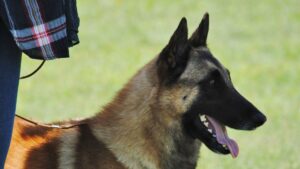
Understanding the Belgian Malinois: This article guides judges to appreciate the breed’s history, purpose, and the key qualities of balance.

Interview with professional handler Trina Matteson, discussing her journey in dog breeding, showing, and the challenges she faces.
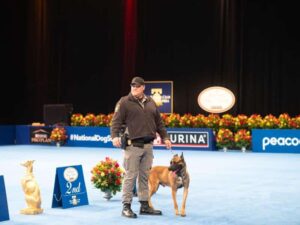
Discover the heroic Belgian Malinois K-9 Cop ‘Rom’, at the National Dog Show. Follow his journey and commitment to safety.
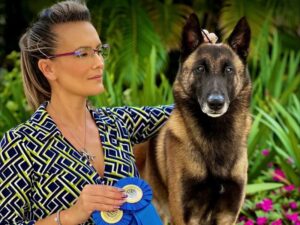
Exclusive interview with Trina Matteson, Belgian Malinois breeder, on the breed, health, and the dog show community.
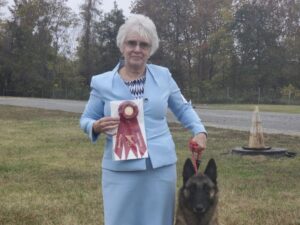
Meet Susan Legg, the Breeder of Champion Belgian Malinois. Discover her 50-year journey, famous dogs, breed concerns, and more!

Interview with William Sessa, handler of Uniformed Service K9 known as “Hummer,” the 2022 AKC Humane Fund ACE Award Winner.

Any good dog parent knows that ALL dogs have the potential to help us stay active. That being said, check out this list of energetic dogs.

Discover life with the Belgian Malinois, a highly intelligent and energetic breed ideal for sports and companionship.

Understanding the Belgian Malinois: This article guides judges to appreciate the breed’s history, purpose, and the key qualities of balance.

Interview with professional handler Trina Matteson, discussing her journey in dog breeding, showing, and the challenges she faces.

Discover the heroic Belgian Malinois K-9 Cop ‘Rom’, at the National Dog Show. Follow his journey and commitment to safety.

Exclusive interview with Trina Matteson, Belgian Malinois breeder, on the breed, health, and the dog show community.

Meet Susan Legg, the Breeder of Champion Belgian Malinois. Discover her 50-year journey, famous dogs, breed concerns, and more!

Interview with William Sessa, handler of Uniformed Service K9 known as “Hummer,” the 2022 AKC Humane Fund ACE Award Winner.

Any good dog parent knows that ALL dogs have the potential to help us stay active. That being said, check out this list of energetic dogs.
The best way to ensure a long and happy relationship with a purebred dog is to purchase one from a responsible breeder. Not sure where to begin?
Contact the National Parent Club’s Breeder Referral Program, which is listed on the AKC Breeder Referral Contacts page.
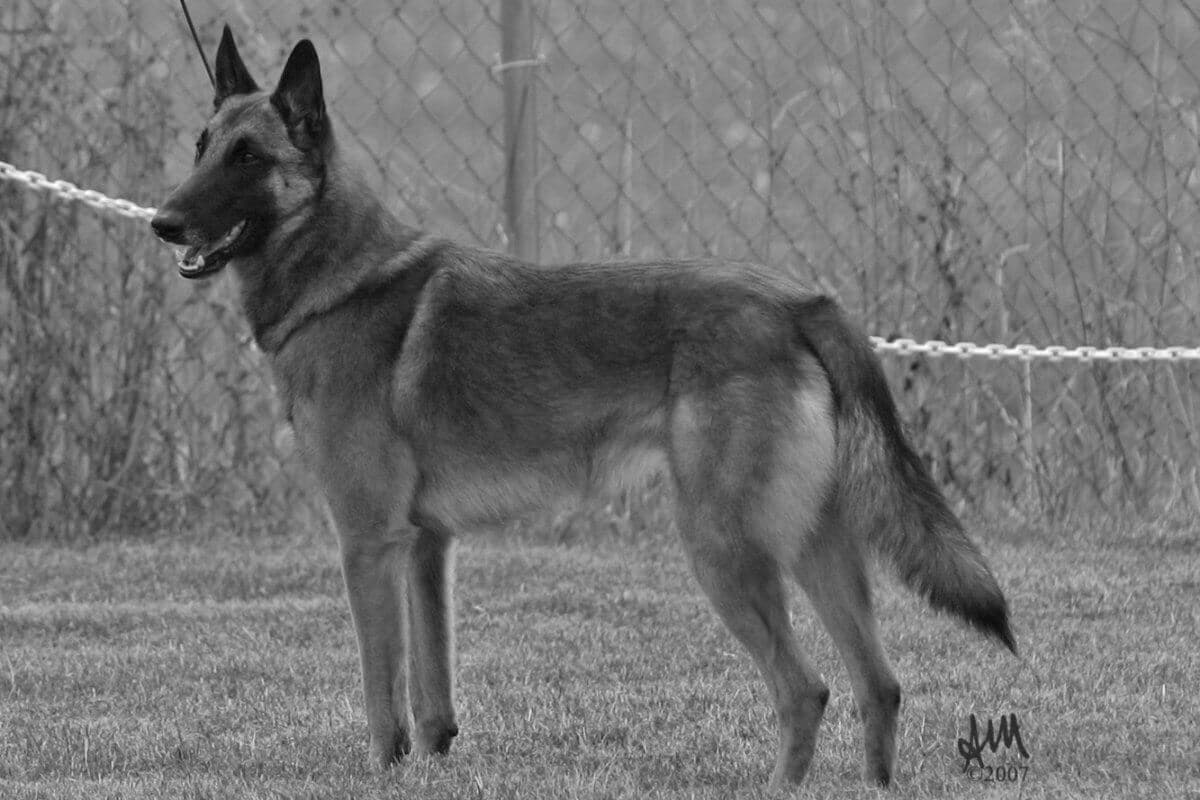

"*" indicates required fields
Showsight Magazine–the world’s most influential purebred dog publication since 1992. Each issue reaches a global audience dedicated to preserving the history and health of purpose bred dogs. Filled with award-winning editorial focused on news and insights from the dog show community, top breeders, handlers, AKC Judges, and more!